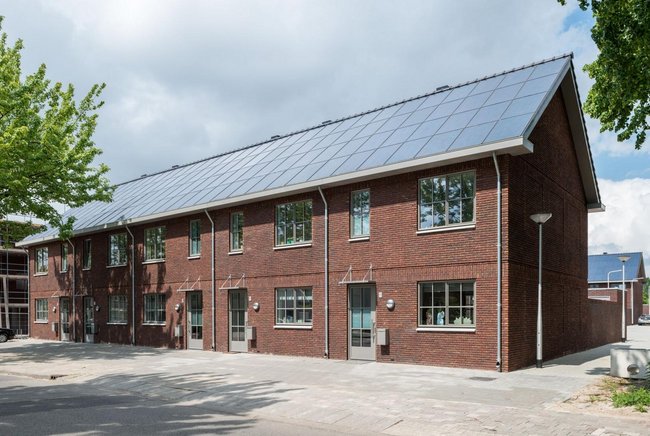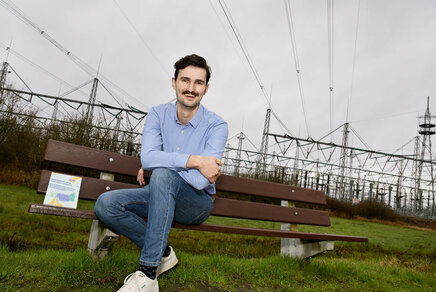Why solar panels do not always live up to expectations
TU/e researcher tested the performance of solar panels in real-life by looking at 256 identical residential PV systems all across the Netherlands.

The need to switch to renewable energy sources such as wind and solar has never been more urgent. As the gas tap is slowly turned off, electricity becomes more and more expensive, and the effects of the warming climate are becoming painfully visible, more and more people are acquiring solar panels. The performance of solar panels has been tested extensively in the laboratory. But do these PV systems indeed deliver what they promise? Researcher Bin Meng decided to test the solar panels in real-life. He found that on average the performance of the tested PV systems is 6 procent lower than expected. We talked to Meng to find out what is happening.
In the Netherlands, already one in five households has photovoltaic panels (of PV) installed on their roofs, making this country a European leader in installed solar power capacity per capita.
Before people decide to install solar panels on their roofs, often spending thousands of euros, they want to know how much power they will generate. An accurate estimate of the yield will tell them how many years it will take to earn back their precious investments. Correct predictions also matter to the manufacturers of the PV systems. They usually provide warranties on their product and don’t want to be faced with a multitude of claims from their customers.
In practice, however, yield estimates are often based on standard test conditions that fail to take into account the precise situation on the ground. The actual performance often falls short of what people expect, due to variations in solar radiance, heat effects, dirt, shading, and module degradation.

Testing efficiency on the ground
To get a more precise idea about actual PV efficiency, PhD candidate Bin Meng of the Building Performance research group at the department of Built Environment contacted MorgenWonen, a daughter of Dutch construction company VolkerWessels.
Over the past years, Morgen Wonen has built hundreds of pre-fabricated dwellings all over the Netherlands, of which part are equipped with solar panels. Because both the homes and the panels are standardized, the researcher was offered a unique opportunity to compare the efficiency of 256 identical residential PV systems across 19 sites, both under the same conditions and between different conditions.
“This allowed me not only to assess the difference between promised and actual efficiency, but also to tease out what exactly caused this difference”, says Meng. In total, the researcher looked at five factors: location, orientation to the sun, seasonal variations, sky clarity and aging.
The impact of masking
“The first thing I could see from my analysis, is that actual performance falls short what is generally predicted by simulation models. In fact, we found a 6 per cent difference with expected performance! This implies that sellers of PV systems tend to overestimate the efficiency of rooftop PV systems in typical Dutch residential communities.”
“This is not only bad news for the customers, it might also present problems for manufacturers and installers, if failure to deliver expected performance leads to breach of contract”, says Meng.
To find out what was happening, the researcher then looked at the individual factors. “We quickly saw that standard estimates tend to overlook the impact of masking on performance. This refers to amount of indirect light that falls on the PV system, and depends on the fraction of sky that is visible to the panels. Even in suburban areas, where high-rise buildings are rare, the blocking of sky diffuse radiation tends to reduce PV efficiency quite significantly.”

Improving simulation models
So what do these findings mean for the prospective buyers and sellers of PV systems? One obvious solution is to test the panels first in real-life, instead of just trusting the estimates of simulations in ideal circumstances.
“I looked at the impact of testing the panels for one month during high summer. Already, we were able to cut the relative error of conventional PV simulation models almost in half, by nearly five percentage points”, says Meng.
The researcher acknowledges that this may not be a practical solution for many new buyers. However, he hopes that real-life testing can help improve current simulation models, so that future buyers will be able to achieve more accurate estimates of the masking effect, without actually having to install them first.
This will also help the manufacturers, who want to be sure about their claims. This will be part of future research.

Legacy systems
Another group that may benefit, are current owners of PV systems, says Roel Loonen, supervisor of Meng, together with Jan Hensen.
“Many people tend to forget about their panels, once they have them installed. They fail to regularly check their app on the telephone, and are unaware if and when panels stop working. Doing regular checks on these legacy systems, using approved benchmarks, might help these users.”
“They can also use the data to decide when to replace their panels. The standard lifetime of PV systems is estimated to be around 25 years, but we don’t know for sure. Having real-time data about performance can help inform users about the optimal time of replacement. Not too late, but also not too early, considering the environmental impact of used solar panels. We want to use them for as long as they work well”, says Loonen.
More info
Bin Meng, Roel Loonen, Jan Hensen, Performance variability and implications for yield prediction of rooftop PV systems – Analysis of 246 identical systems, Applied Energy.
More on Sustainability



Latest news



